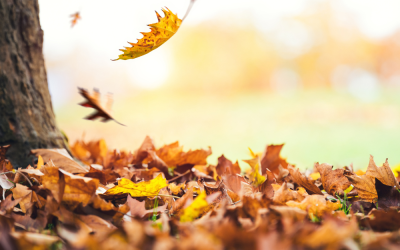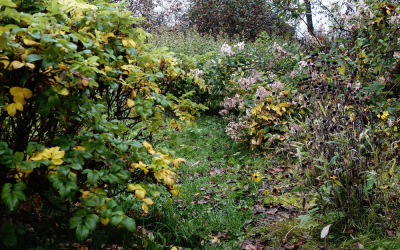Landscape trees require a different form of care to forest trees, which for the most part can be left to grow naturally. As this type of tree tends to grow in places such as gardens and public parks, they require pruning to ensure structural stability and to maintain their overall appearance.
Although trees are able to grow naturally without being pruned, routine arboreal maintenance helps to increase health and longevity. Before any pruning is carried out, checks should be made to see whether there is a TPO (tree preservation order) on the tree to be pruned (the local council can advise on this).
Why a Tree might need to be Pruned
Besides health, aesthetics and strength,there are a number of other reasons to prune a tree. These might include:
- Specific methods of pruning and trimming to encourage flowering and fruit.
- Pruning for specific aesthetic reasons, such as topiary.
- Size control (if this presents any danger or obstruction to surrounding natural and man-made structures, humans or other living creatures).
- Removal of branches that rub together to avoid damage to either branch.
- Freeing up the canopy to allow air and light to filter throughout the whole tree (this also encourages foliage and reduces disease risk).
- Reducing water sprouts and suckers at ground level, which can take nutrients from the tree, weakening its structure. Establishing one main tree and a dominant “leader” (the central part of the tree running up the middle) also helps to strengthen the tree structure, protecting it against adverse weather conditions.
- Removal of dense branches to allow light and air to reach plants at ground level.
- Pruning broken or dead branches for safety reasons – such as proximity to electrical lines, obscured traffic or falling risks in the event of hurricanes.
When to Prune Trees
Regular pruning throughout the tree lifecycle is a preventative task that helps to extend the life of the tree while reducing the need for heavier maintenance work or stress on the tree itself.
Winter Pruning
While routine, light pruning to remove dead, diseased or weak branches can be carried out year-long with minimal damage to the tree, heavier pruning (such as wound and growth-closure) is best done before the first growth flush of spring, while the tree is still dormant.
Pruning during mid to late winter encourages spring growth when temperatures begin to rise. It should be noted that while some trees bleed sap if pruned in winter, this does not harm the tree and tends to stop once the tree begins to develop leaves.
Pruning in Other Seasons
Autumn pruning carries a risk, as warmer temperatures can introduce the tree to disease. Similarly, spring and summertime are best avoided – however in some cases experienced gardeners have been known to prune in summer (shortly after seasonal growth has peaked) to direct growth and slow the development of a tree.
Pruning Other Tree Varieties
Removing the total leaf surface of the plant in this way reduces the number of nutrients received by the roots and stunts the overall growth of the tree where this is required.
Pruning in wintertime makes work easier on deciduous trees, where a lack of leaves helps to aid visibility – while other types of tree are pruned differently:
Flowering Trees
Trees that flower fall into two categories: early and late bloomers. Early blooming trees (such as magnolia, ornamental cherry and apricot) set buds on the previous year’s growth and should be pruned immediately after the tree completes blooming (rather than in winter). Cherry trees should be pruned in mid-summer to prevent silver leaf disease.
Late blooming trees (e.g. dogwood and hawthorn) set buds on the current year’s new growth and tend to bloom in late spring to early summer. For the best results and the most blossom, these trees should be pruned early in spring.
Evergreens
Evergreens (or conifers) require minimal pruning, and should be maintained according to the growth habits of the individual species:
Pines
Pines rarely require pruning, but are sometimes pruned to encourage denser growth by removing up to ⅔ of the length of new candles (prominent upright buds at the branch tips).
Typically this species will only grow a single flush of tip growth each spring and should be pruned before this matures, avoiding terminal buds (which can stunt growth, resulting in dead stubs) and never pruning further back than the current year’s growth.
Douglas, Spruce and Fir
This variety can be pruned year-round due to their continuous growth and lateral (side) buds which will emerge if the terminal (tip) buds are taken away – although in general it is best to prune in late winter prior to any new growth (some spring pruning is also acceptable).
Junipers, Hemlock, Arborvitae and Yew
These also grow continuously and can be pruned any time throughout midsummer. While these varieties can tolerate heavy shearing, it’s best to prune only to correct growth defects in order to preserve their natural shape.
What Tree Pruning Involves
The four most common methods of tree pruning all relate to the crown of the tree. This is because the crown of the tree is essential for photosynthesis, without which the rest of the tree can weaken. These methods are as follows:
Crown Reduction
While thinning is intended to reduce the amount of foliage, crown reduction strengthens the tree while promoting new growth through removal of a tree branch back to a developing lateral branch and is generally used on more mature trees. Once the growth season begins in springtime, these lateral branches will then form part of the new tree crown.
A Note on Topping and Pollarding
Crown reduction is considered a gentler alternative to tree topping, as smaller incisions are made and less of the crown is removed, leaving behind ample previous growth to maintain structure.
While there may be some instances where topping is required, in general it is best to avoid this as it can [potentially destroy the tree’s natural shape, promoting suckering, weakening structure and leaving stubs that can lead to health issues.
Pollarding is a more extreme form of pruning where the whole crown or head is removed for aesthetic reasons – though this can increase the need for further pruning.
Crown Raising
This method is intended to raise the bottom edge of tree limbs and branches upwards to create a clearer view underneath. Crown raising should be carried out incrementally, over an extended period of time (only a few limbs less than four inches in diameter), as excessive removal of branches at once can weaken the tree.
Crown Thinning
Thinning requires the removal of certain live branches to reduce the density of the tree and to increase the amount of air and sunlight the tree receives while lessening pressure on tree limbs from weather conditions and gravitational pull.
The goal here is to leave the tree looking healthier, though not as though it has been noticeably pruned. This method is most frequently performed on older trees and should be performed in a balanced way, i.e. only removing 10-20% of the branches from the edge of the canopy.
Small trees such as fruit trees may be thinned by removing small limbs between ¼ to ½ inches thick, while larger trees may require end portions of the limbs measuring 1-4 inches in diameter.
Crown Cleaning
This relates to the removal of broken, dead or diseased branches and is also a routine part of thinning, raising and reduction. Crown cleaning can be done throughout the year to reinforce the structural integrity of the tree for safety and longevity.
How Trees are Pruned
Bear in mind that creating cuts into a tree will encourage new growth. Limbs should be cut ¼ inches above a bud facing the exterior of the plant, at a 45-degree angle to avoid disease or damage. This angle represents the direction the new growth will take.
If properly pruned, tree branches typically form into a protective callous where the branch once was. The majority of trees cut back to the trunk area need three cuts to avoid damaging the bark.
The first two cuts take weight from the tree branch. This is done approximately 18 inches up the underside of the branch being removed. The branch is then cut about halfway through. The second cut moves around to the topside of the branch. This is cut until the branch breaks off.
The third cut is intended to promote healthy callous growth and prevent water damage. This is taken on the outside of the collar, a stem tissue at the base of the branch, which is normally slightly swollen, with rougher bark. This cut is made at a 45-degree angle kicking out from the tree’s base.
Tools Used for Tree Pruning
In some cases, tools such as small chainsaws may also be used on larger branches and always with the use of correct PPE and training – and never above shoulder height. While some routine tree maintenance can be done without training, jobs requiring tools like this
are best carried out by a professional tree surgeon to prevent serious injury.
The best tools for pruning trees should be sharp, high quality and well-maintained. These may include:
- Extendable pruners and saws designed for thicker, longer branches.
- Saws capable of removing large branches and limbs quickly and cleanly.
- Pruners to cut stems and branches.
- Loppers for cutting through middle branches.
- Pruning shears capable of cutting up to ¾ inches in diameter.
- Hand saws for cutting branches above 1 inch in diameter (specialist razor-tooth or tri-cut models can cut through larger branches up to 4 inches in diameter).
- Pole saws for extended reach – these must be used with caution, as achieving a clean cut with this tool can be challenging.
- Hedge pruners – as the name suggests, these tools should be reserved for use on hedges and shrubbery only.
If you are based in the Northwest, your local tree surgeon Manchester specialist can advise on how to maintain your trees safely for optimal health and development.



